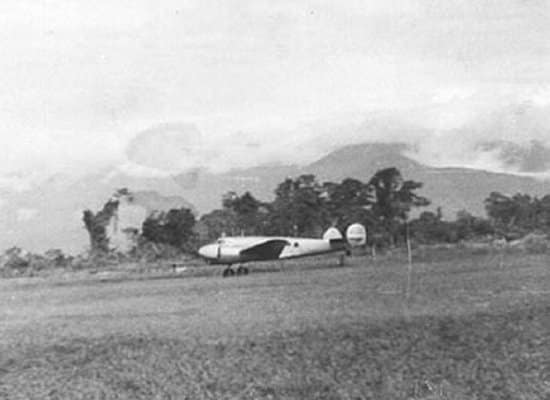Historian Explores the Enduring Mystery of Amelia Earhart's Final Flight

Attendees at this year’s EAA AirVenture show in Oshkosh, Wisconsin are invited to take a fascinating virtual ride with Amelia Earhart on her final flight, courtesy of aviation historian Dr. Leo F. Murphy, a professor of aeronautical science at Embry-Riddle Aeronautical University.
Murphy, a 30-year U.S. Navy veteran and an open ocean navigator who learned to fix his aircraft’s position based on the sun, moon and stars before the days of GPS, will explain what might have happened immediately before Earhart, her navigator Fred Noonan and their aircraft disappeared in the Pacific Ocean near Howland Island.
His lecture, “Searching for Amelia Earhart,” will be offered twice at EAA AirVenture – on Wednesday, July 25 at 10:00 a.m. in the Vette Theater, and again on Thursday, July 26 at 11:30 a.m. in the Hilton Theater.
Earhart was “a highly accomplished, world-famous aviator married to a brilliant publisher and promoter, George P. Putnam,” Murphy noted. Her failed attempt to circle the globe in a Lockheed Model 10-E Electra aircraft in 1937 was part of the couple’s continuing effort to promote the Earhart brand.
Earhart and Noonan departed the United States on June 1, 1937, heading east. Their journey went well until July 2, when they took off from Lae, New Guinea, and vanished without a trace before reaching Howland Island, 2,556 miles away.
The continuing mystery of Earhart’s fate has prompted “lots of wild theories,” Murphy noted. Many of the theories seem to be based on the hope that the iconic aviator and her navigator somehow managed to survive by landing on a reef or were captured by the Japanese. Yet, a photo that supposedly showed Earhart and Noonan as prisoners of war was discredited.
Bones found on Nikumaroro Island, then known as Gardner Island, were measured and analyzed by a British doctor in the 1940s who concluded they belonged to a male. The bones have been missing ever since, but a recent study by a forensic anthropologist suggests they may have indeed belonged to Earhart and that she died as a castaway on this isolated, uninhabited island.
Earhart’s radio wasn’t working correctly as she flew toward Howland Island, Murphy noted. She tried to communicate with the U.S. Coast Guard Cutter Itasca sitting offshore Howland Island, but she couldn’t hear their responses; she was transmitting in the blind when she arrived at her estimated position of the island after dawn. To make matters worse, Murphy said, she never spoke long enough for the ship to lock onto her signal and fix her position. “She said, `I’m 200 miles out, I’m 100 miles out, I’m on top of you,’ but she also said she was at 1000 feet, with only enough fuel to last another half-hour.”
Murphy offers no bombshell theories about what happened to Earhart and Noonan. But, he said, “It all comes down to one thing – how much fuel did she have when she arrived to find nothing but empty ocean? If down to only a few gallons, then she was in the water. But if she had enough of a reserve, she might have made it to Nikumaroro Island, 300 miles away.”
He noted that Noonan was an expert navigator who pioneered Pan American Airways’ flying boat routes across the Pacific. At night he could use three stars to fix his position with considerable accuracy, but in the daytime, the sun provided him only a single line of position, which he had hoped to cross with a radio direction finder bearing. Murphy will review the decisions that Earhart and Noonan might have made inside the flight deck.
Murphy is the author of two books on the history of aviation at Pensacola, Fla. ((Flying Machines over Pensacola: An Early Aviation History from 1909 to 1929, and Hagler Field: A History of Pensacola’s Airport). He also authored From Cropduster to Airline Captain: The Biography of Captain Leroy H. Brown. His newest book, a biography of a Tuskegee Airman, will be published in August.
For more information on EAA AirVenture Oshkosh 2018, go to eaa.org/en/airventure. Embry-Riddle’s booth (sections 49,50,57,58,59) is located within the Aviation Gateway Area.

 Ginger Pinholster
Ginger Pinholster